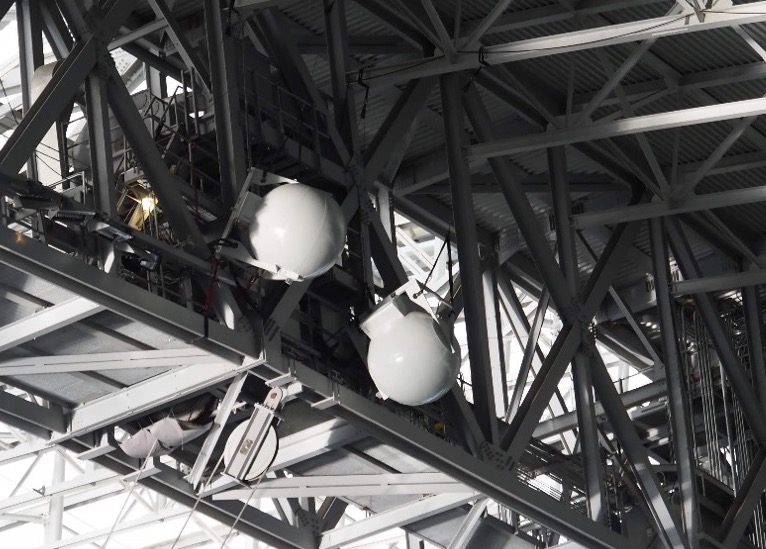
What is probably the biggest in-building distributed antenna system (DAS) got even bigger this year, when AT&T Stadium added 14 more MatSing Lens Antennas to cover the newly available cellular C-band spectrum.
In a press release from MatSing, Dallas Cowboys CIO Matt Messick said that the stadium’s choice to go with a main strategy of using the high-capacity MatSing antennas for its super-dense DAS redesign a few years ago continues to pay off, as the MatSing gear is also well suited to handle the new frequencies in the C-band range.
“With the addition of 14 more lens antennas, we are now overlaying C-Band to deliver high-capacity connectivity throughout the stadium,” said Messick in a prepared statement. “Our initial choice of lens antennas was based on our analysis showing better performance and improved economics compared to under-the-seat and traditional panel antennas, and I am pleased to say these benefits extend to C-Band.”
In our most recent Stadium Connectivity Outlook Survey, venue tech professionals told us that improving fan wireless networks was their top priority for the next year. MatSing antennas have been part of several large recent network builds, including a DAS upgrade at Caesars Superdome in New Orleans and for a new DAS at the Xcel Energy Center in St. Paul, Minn.
Roof structure makes AT&T Stadium a perfect place for MatSing antennas
Since the MatSing antennas can broadcast a signal much farther than conventional antennas, one of the latest design strategies with MatSings is to put them in the rafters of an arena, a placing that gives them clear line of sight to seats while also keeping them hidden from fans’ eyes. With its extensive overhead structure, AT&T Stadium had more than enough places to mount the MatSing antennas for its 2021 redesign, as well as the new antennas.
The new upgrade deployment, which was operational before the Cowboys’ first NFL regular season home game this year, uses a mix of 24-beam and 48-beam versions of the company’s unique spherical antennas, according to MatSing. With the new deployment AT&T Stadium now has 34 MatSing antennas deployed.
Jeff Alexander, senior vice president at ExteNet Systems, which is the stadium’s network operator, said the network was originally planned to accommodate the C-band spectrum when it became available.
“The architecture of the network anticipated this kind of upgrade,” Alexander said. “We were able to complete it in a fraction of the time at a fraction of the cost.”
According to Alexander the network now supports download speeds of up to 4 Gbps for devices being held on the stadium floor, where fans might sit for a concert.
“The biggest events don’t even put a dent in this network,” Alexander said of the cellular wireless infrastructure inside AT&T Stadium. “The proof is in the pudding.”
“The Dallas Cowboys and AT&T Stadium were early adopters of our lens antenna technology and are now benefiting from the efficient C-Band overlay, which is a key part of our go-to-market strategy,” said MatSing CEO Bo Larsson in a prepared statement. “With C-Band commercialization in venues fully underway, this is an effective way for mobile carriers and network providers to increase sectorization and expand their service with high-capacity 5G.”








